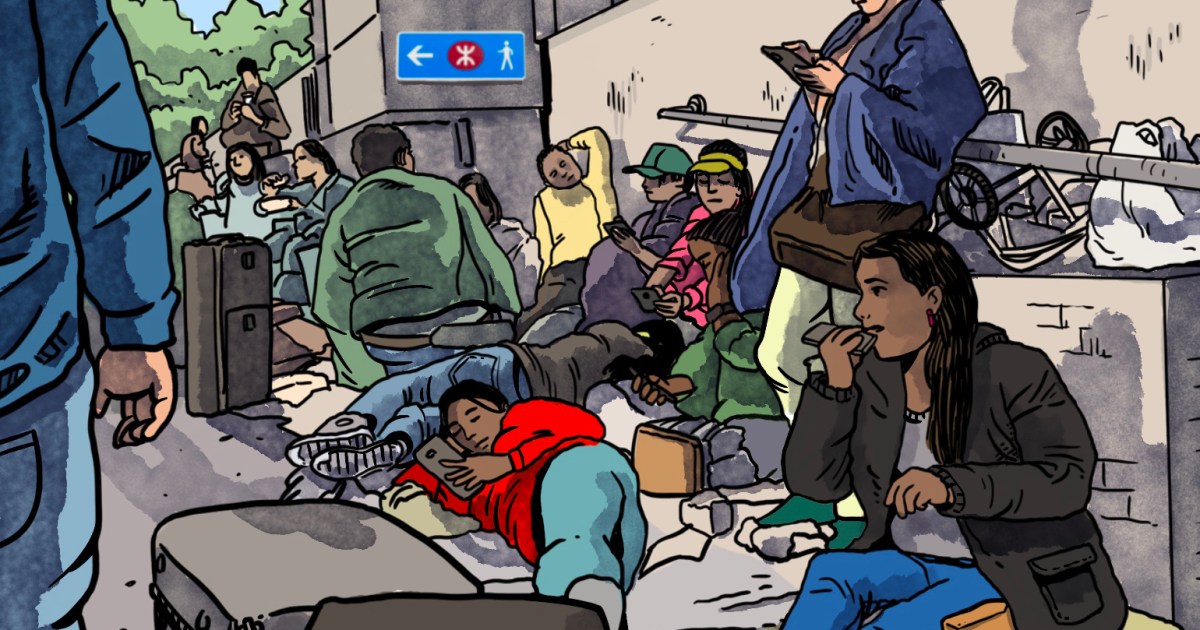
◆ ◆ ◆
Mandla Mlangeni, trumpeter
Malcolm Jiyane Tree-O, “Life Esidimeni”
'Life Esidimeni', from trombonist Malcolm Jiyane's debut album 'Umdali', tells a story of those forgotten and sometimes neglected by society. With its hauntingly lyrical trumpet improvisation, the piece laments an often neglected part of our recent history, the tragedy of Life Esidimeni, which claimed the lives of 144 people in mental health institutions in Gauteng province. Malcolm's musical arrangement is both a reminder of and an ode to the voiceless and dispossessed. Part of the pervasive beauty of South African jazz is that it tells stories we sometimes forget or push aside. It is a wake-up call to think of the sick and exhausted. Malcolm's music holds a mirror up to society to look at and listen to the suffering of the unknown patients who died of starvation and neglect at the hands of the 'people's government'.
◆ ◆ ◆
Giovanni Russonello, jazz critic
Miriam Makeba, “Jolinkomo”
When Miriam Makeba tried to return to South Africa in 1960 to attend her mother's funeral, she learned that her passport had been canceled. She would not be coming home for 30 years. Even though Makeba's life and work were often limited by the uncertainties of exile, she seemed to have the antidote: an inner sense of clarity and drive. That feeling is evident throughout her work, and one can imagine how indispensable it was to her. While living abroad and meeting with artists, activists, and diplomats, she discovered that the loneliness of exile also contained its opposite: solidarity. Musically, Makeba brought South Africa's song traditions into dialogue with sounds from around the world, perhaps most exciting after moving to Guinea in the late 1960s. She befriended the country's political and cultural leaders, met her husband, and was posted to the United States in 1971. Kwame Ture; and of course, put together a great local band. In this 1977 performance, a sparkling West African latticework of guitars, drums and bass underscores the old South African melody of “Jolinkomo,” a song that may have originally been sung without instruments.
It's hard to call Makeba a “jazz musician,” but suffice it to say that she took her legacy of songs in a cosmopolitan direction, expanded listeners' imaginations, and proved herself an ambassador for more than just music. Does that count?
◆ ◆ ◆
Carol Ann Muller, scientist
Kyle Shepherd, “Cape Genesis: Slave Labor”
The 2012 album “South African History !X” by pianist Kyle Shepherd questions the history of Cape Town, the South African past and – taking into account what DNA technology tells us about the origins of humanity – our shared global history, through the sounds of the musical bow and Khoisan click languages. The track on South African History !X that speaks most to us in the present moment is Cape Genesis: Slave Labor. It begins with the fundamental notes of Shepherd’s mouth bow, the overtones of which are shaped into a high melody and then enveloped by the improvisations of Zim Ngqawana’s tenor saxophone, the percussive timbres of drummer Jono Sweetman and the delicate bass lines of Shane Cooper. The album follows on from the historical sounds of pianist and bow player Hilton Schilder (of Goema Club); the free improvisation of Garth Erasmus; and the sounds we now call 'Cape Jazz', created by many including Abdullah Ibrahim, Sathima Bea Benjamin, Robbie Jansen, Muneeb Hermans and Ramon Alexander. Decolonising South Africa's history begins by listening carefully to the contours of its improvised music, for it takes us back to a deep African past.
◆ ◆ ◆
Thandi Ntuli, pianist
Andile Yenana, “Dream Wanderer”
The first reason I chose this song is because I wanted to avoid artists that a lot of people are drawn to, especially those who became quite popular abroad, especially during the apartheid era. To me, this song has a very distinct South African jazz sound. It's much more modern and harmonically extended than the typical I-IV-V progression that a lot of people are used to. I love hearing Andile Yenana's contributions as a piano player, his structure and his touch. In addition, it features the beautiful arrangement styles and harmonic intonations of that particular period, which I really enjoy. He worked with artists of the generation before us, artists who stayed in South Africa and didn't necessarily go into exile. During this era, a distinct sound developed that was heavily influenced by American music, yet deeply rooted in the South African music they grew up with. I feel very connected to that.
◆ ◆ ◆
Darius Brubeck, pianist and author
Barney Rachabane, “Kwela Mama”
Barney Rachabane was South Africa's leading alto saxophonist and appeared on many South African jazz recordings from the 1960s onwards. After appearing on Paul Simon's 1986 album Graceland, he toured the world with Simon's ensembles and with Afro-Cool Concept (a band I co-led). His playing on this 1989 piece is practically a summary of South African jazz up to that point, at its most idiomatic. Listen to his cadenza-like introduction, which moves from screeching glissandi in the upper register to honking low notes to lightning-fast mid-range fills between phrases. His choruses veer between township jive and bebop virtuosity. Yes, he's showing off, but his expressive intensity is as dazzling as his mastery of the alto saxophone: you feel his pride, his rapture, his tenderness, his humor and his enthusiasm as he unleashes his volcanic power on the world. The piece is a little long; you can take it off after five minutes – but I bet you won't.






Recent Comments